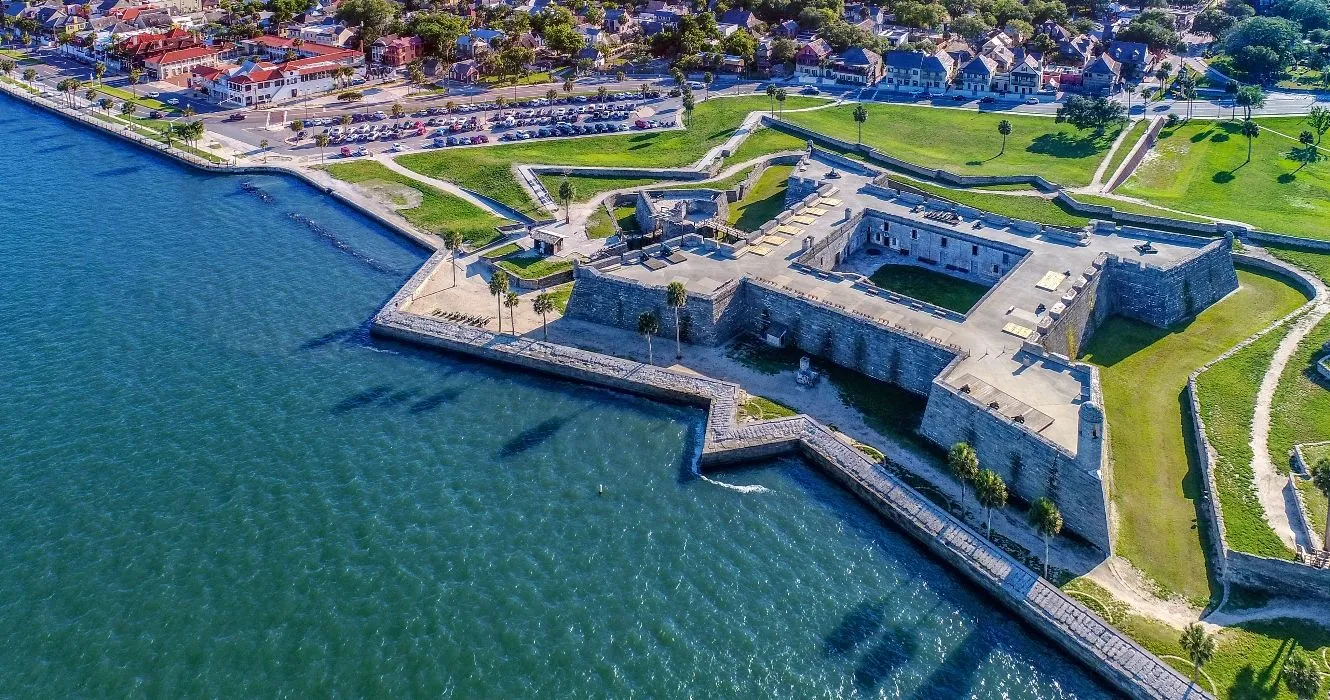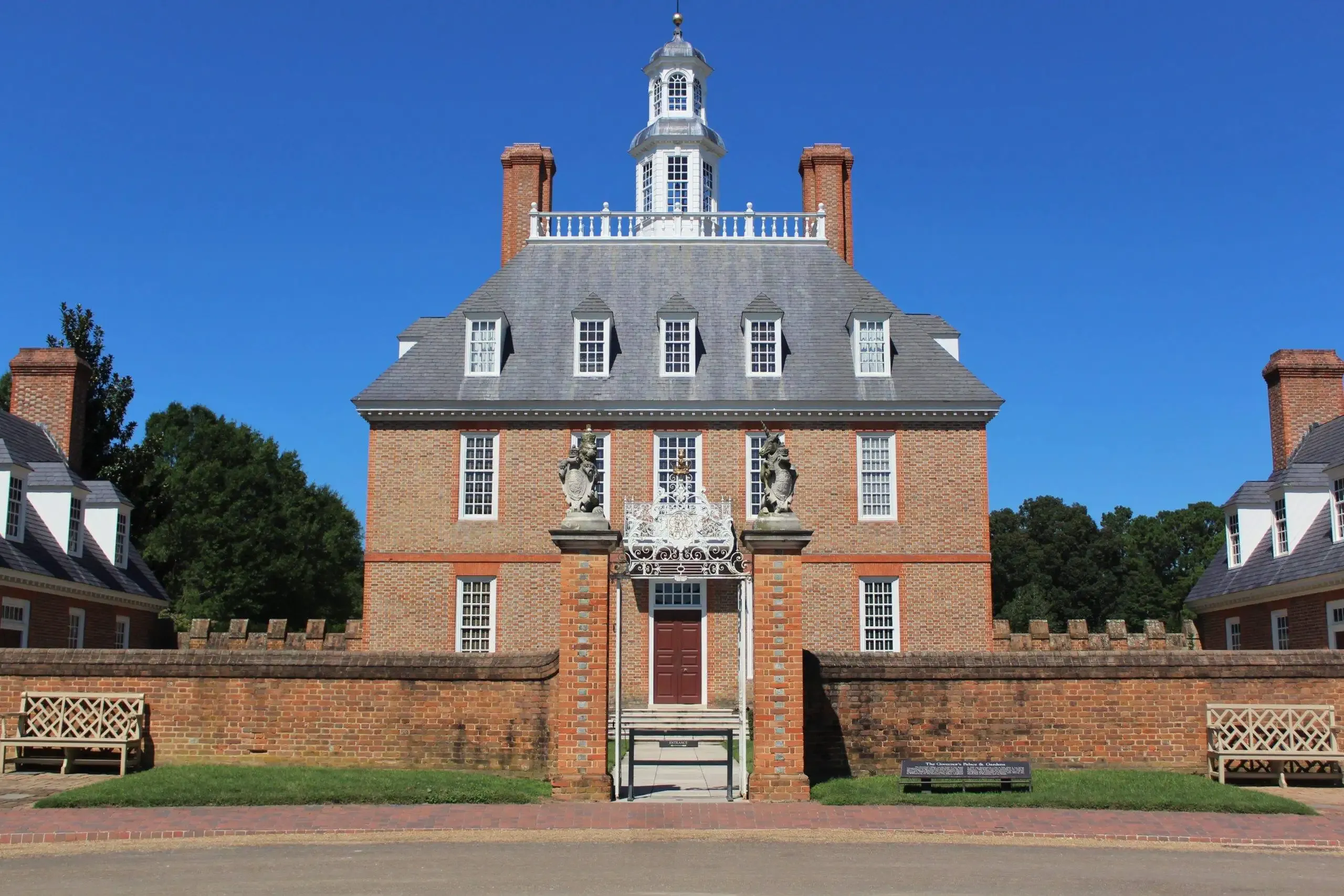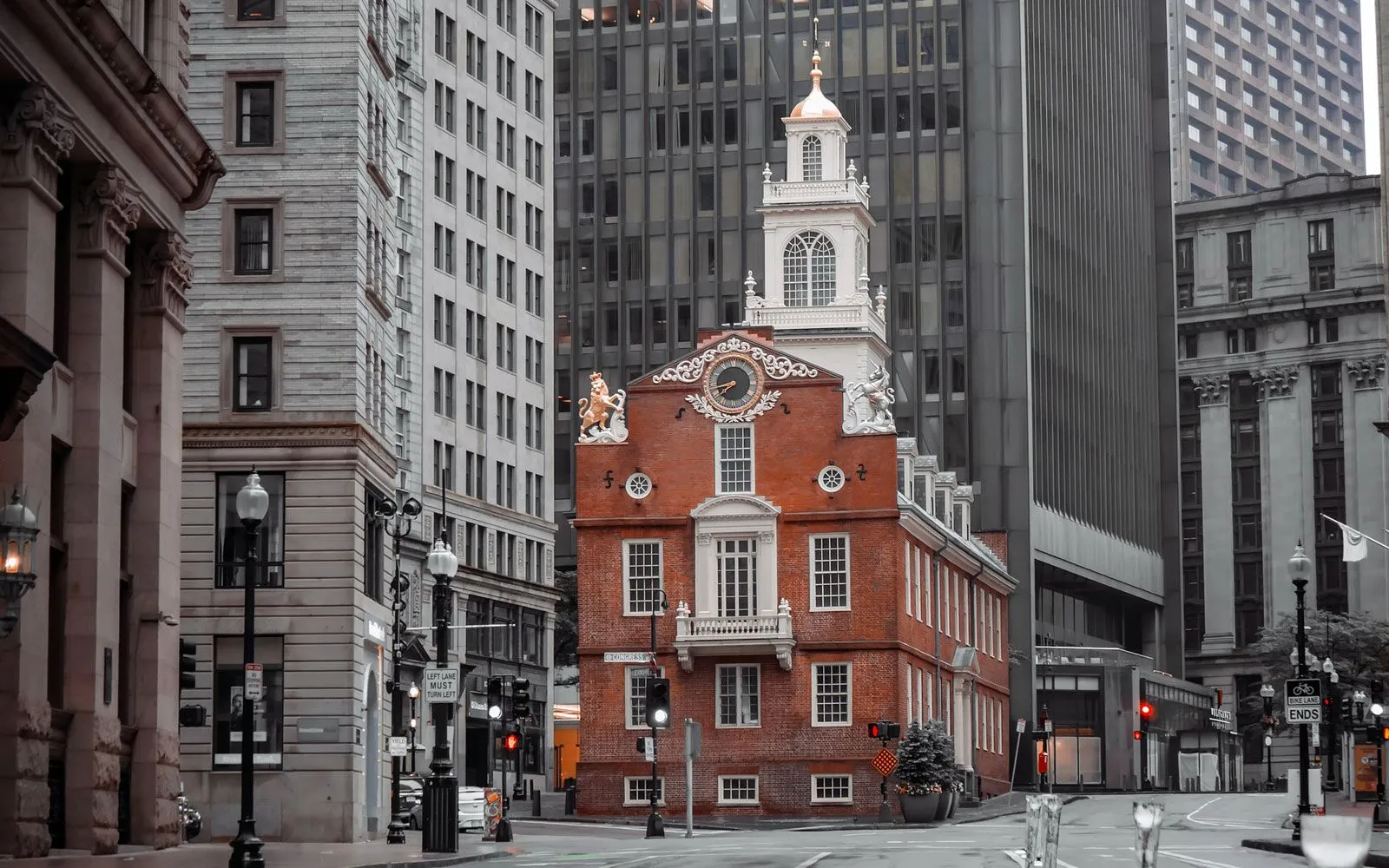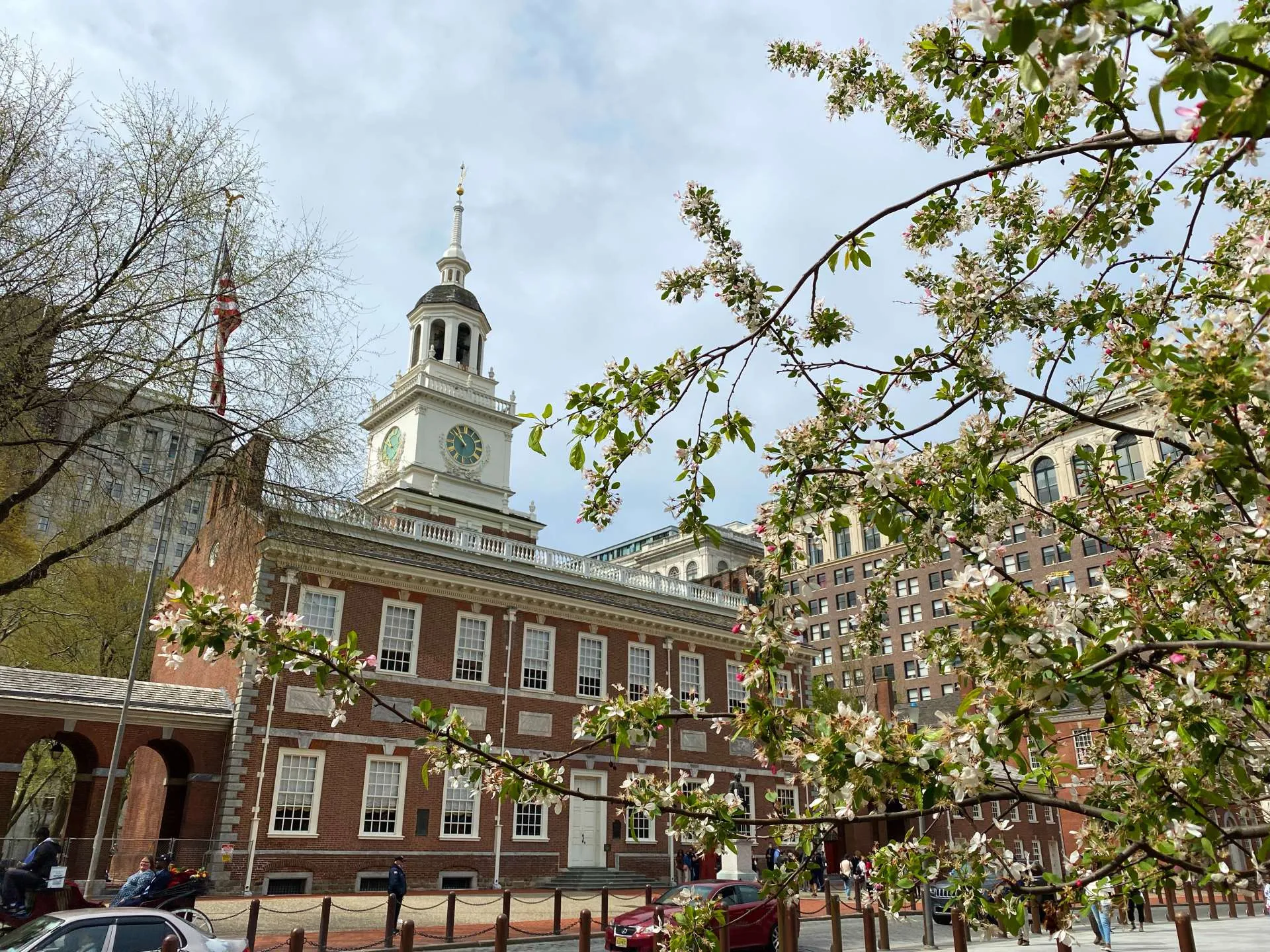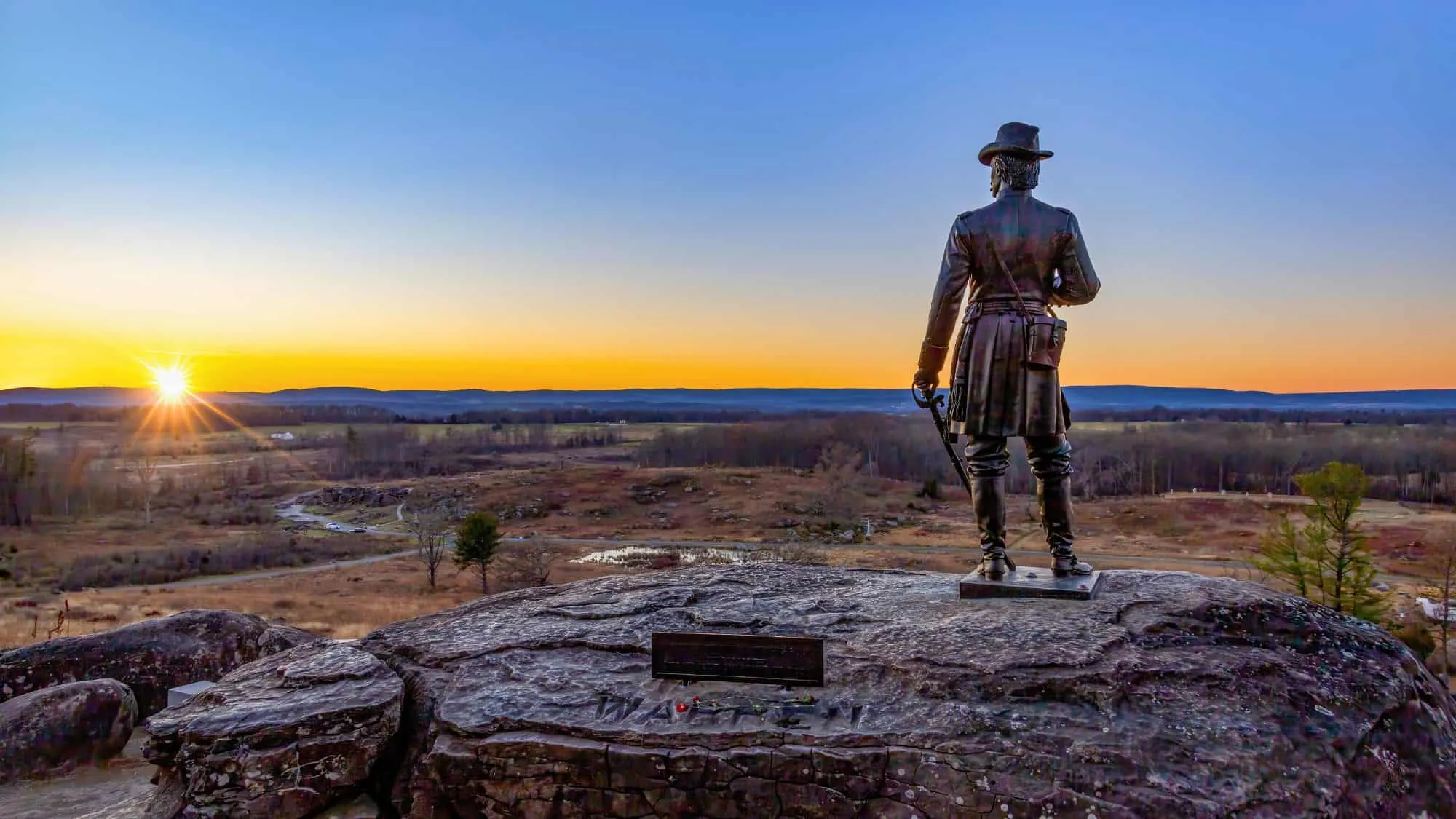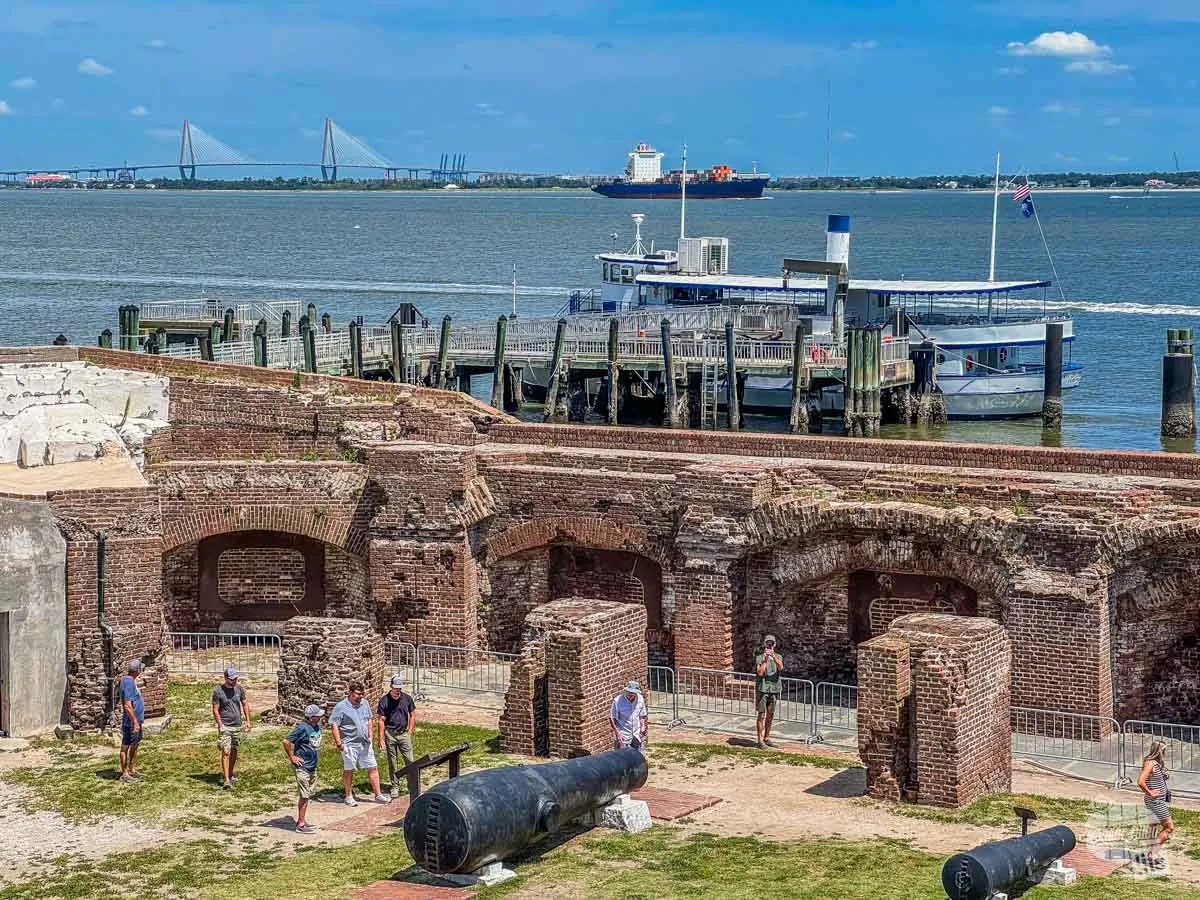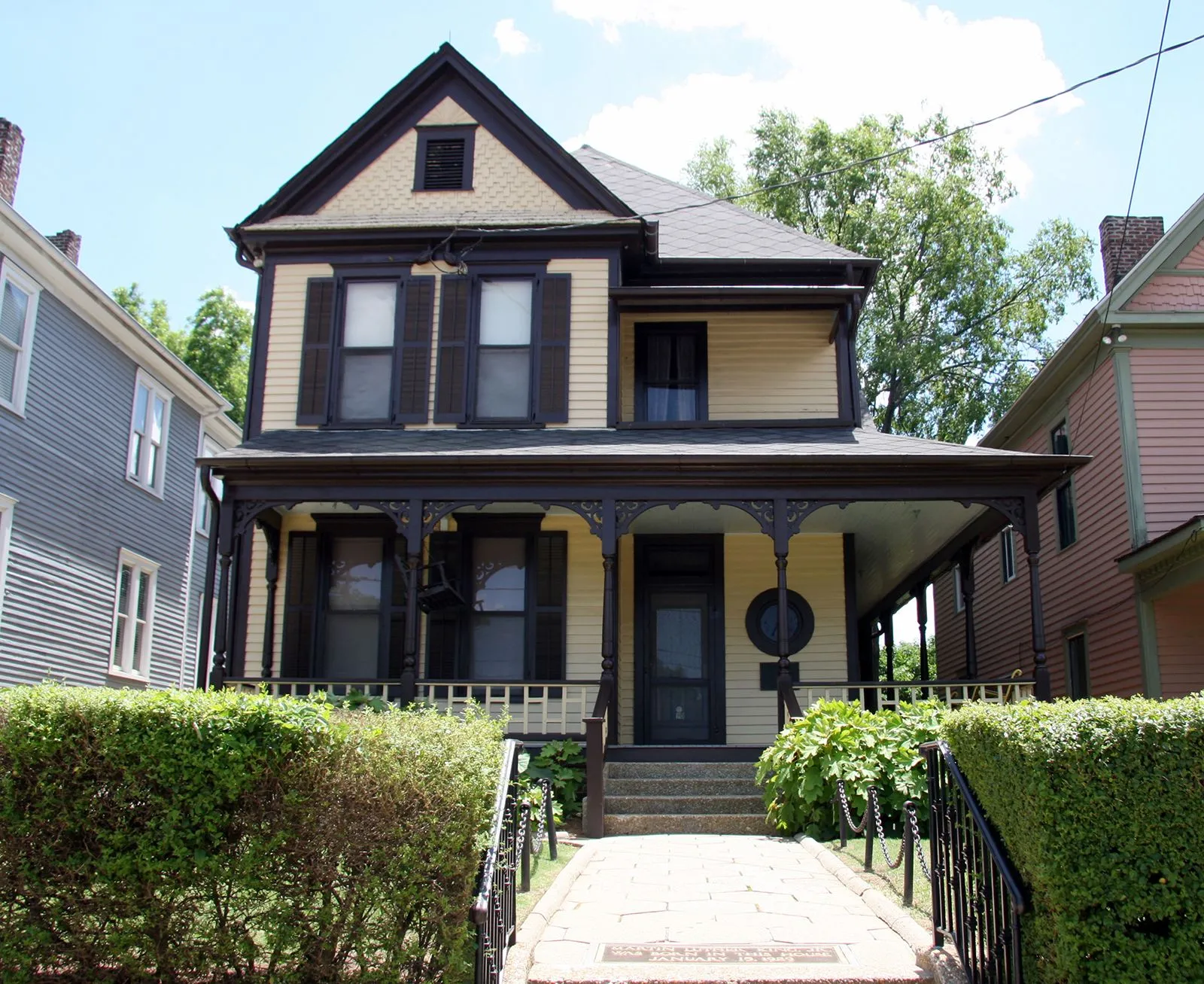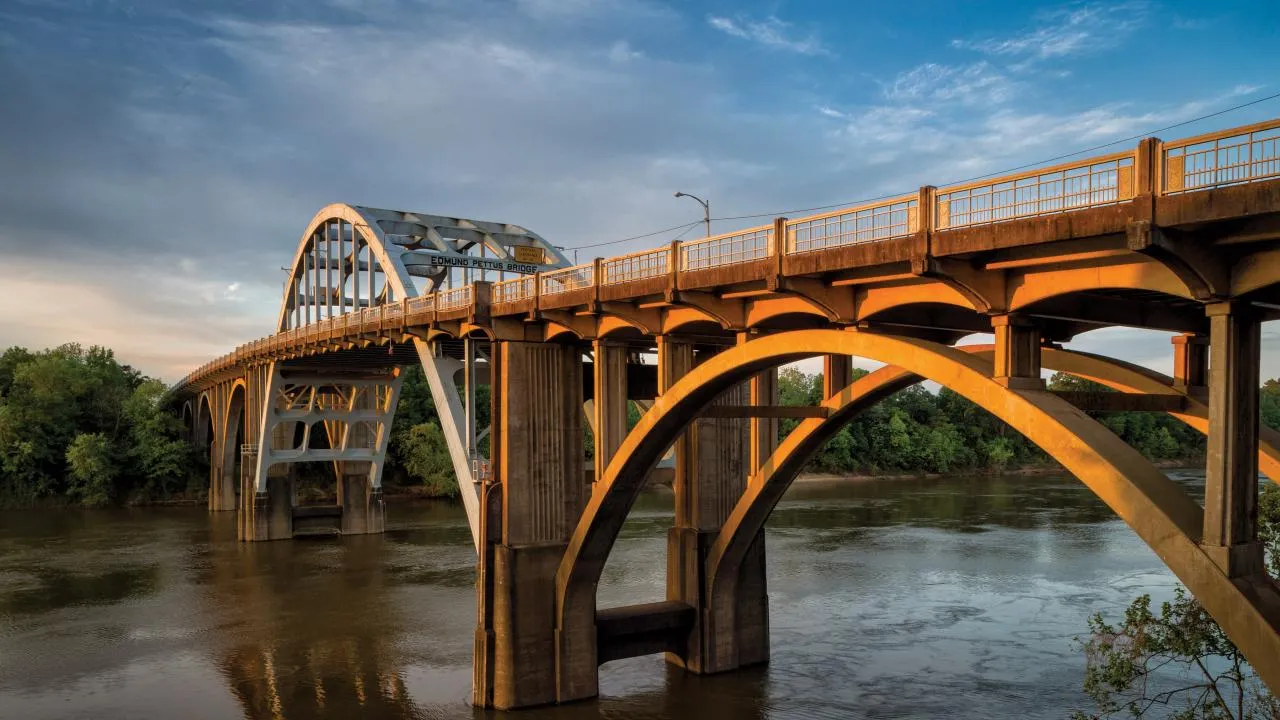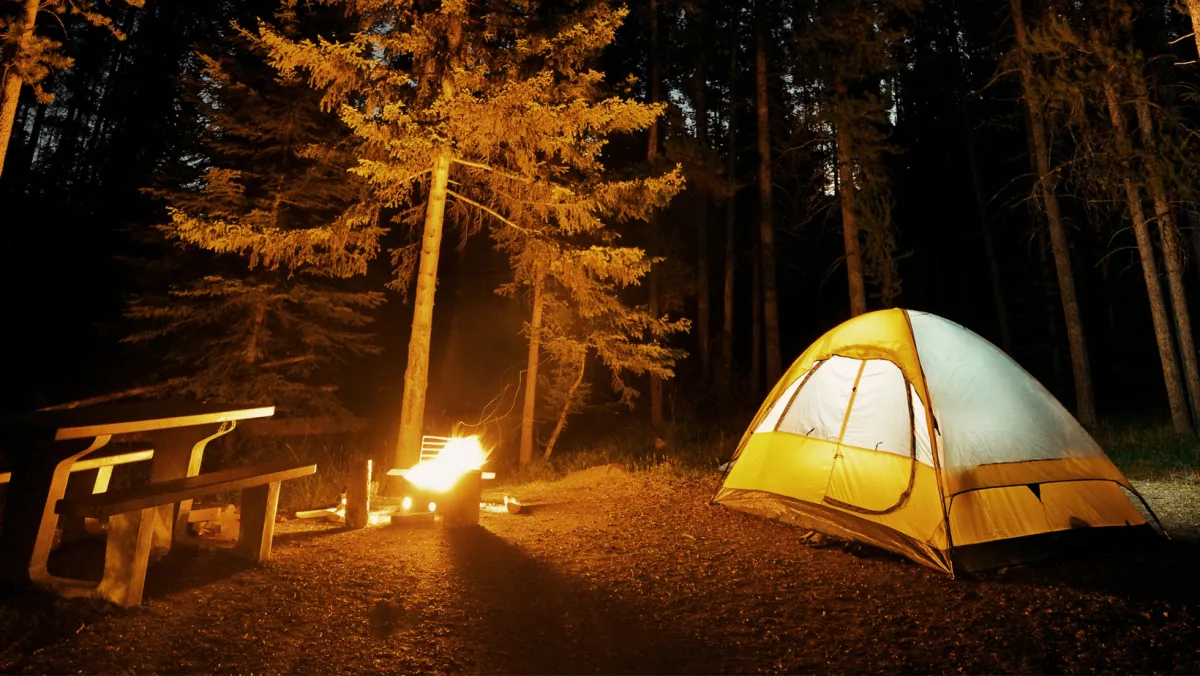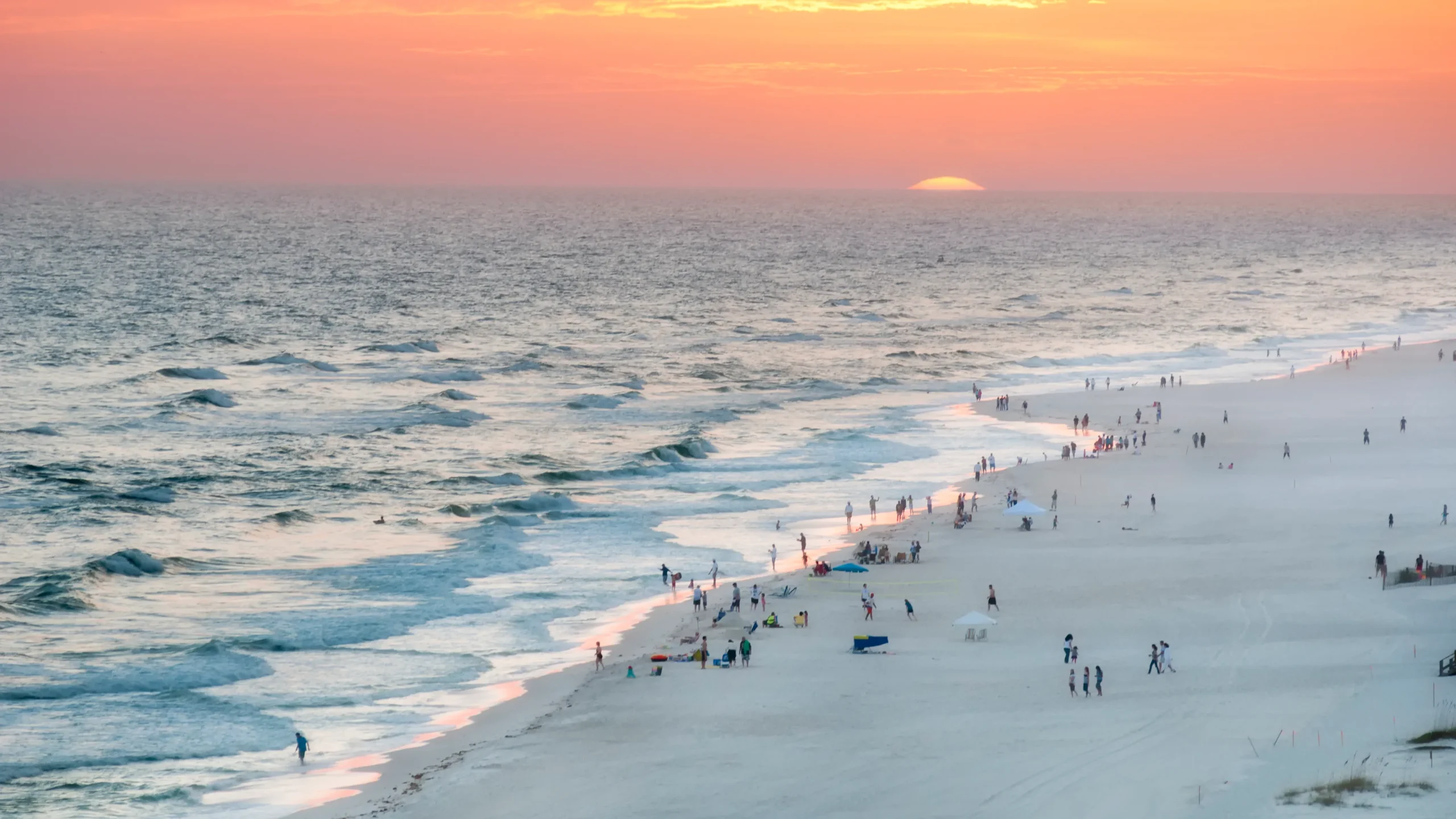The U.S. East Coast isn’t just a geographical region; it is America’s living memory palace, where history breathes through cobblestone streets and whispers from hallowed battlefields. As someone who has spent over a decade exploring these East Coast history destinations, I can tell you that experiencing this part of the country is like walking through the pages of America’s most defining moments. From the first European settlements to the Civil Rights Movement, every mile tells a story that shaped our nation. Whether you are a dedicated historian or a family looking for educational adventures, the sheer variety of East Coast history destinations offers something profound for everyone. This guide covers the essential East Coast history destinations you won’t want to miss on your next east coast road trip.
1. St. Augustine, Florida: America’s oldest colonial gem
Step into the nation’s oldest continuously occupied European-established settlement, founded in 1565—a full 42 years before Jamestown. This Spanish colonial gem stands out among East Coast history destinations for its unique “Old World charm” and distinct architecture. Unlike other British-influenced historical sites on the East Coast, St. Augustine offers a flavor of Spanish heritage that is rare in the region. The city’s preservation allows you to walk streets that have existed for centuries, making it one of the most immersive East Coast history destinations for travelers seeking tangible connections to the 16th century. If you are planning an east coast vacation, this city is a mandatory stop.
Top attractions and activities in St. Augustine
Castillo de San Marcos This massive 17th-century stone fortress, built from coquina (local shellstone), successfully repelled numerous British attacks. The views from the ramparts overlooking Matanzas Bay are among the most evocative in the country, and the cannon demonstrations bring the fort’s defensive history to life, cementing its status as a highlight among East Coast history destinations.
Colonial Quarter This two-acre living history museum spans distinct historical periods where you can climb a 17th-century watchtower, watch blacksmiths at work, and witness musket drills. These activities provide a hands-on understanding of Spanish colonial life that is essential for any tour of East Coast history destinations.
Fort Mose Historic State Park Visit the site of America’s first legally sanctioned free Black community, established in 1738. This powerful location offers early insight into the fight for freedom long before the Underground Railroad, adding deep cultural value to your list of East Coast history destinations.
Why St. Augustine is a top history destination
What makes St. Augustine special is its distinctly European atmosphere, with narrow, brick-lined streets and Spanish architecture. Travelers consistently praise the city’s unique 450-year-old history that you can literally touch and feel. However, some visitors find the tourist-focused attractions can feel commercialized, and summer crowds can be overwhelming. The best experience comes from guided Colonial Quarter tours that fully showcase the living history demonstrations.
Practical details:
-
Best time to visit: Fall through spring to avoid the summer heat and crowds common to southern East Coast history destinations.
-
Price range: $15-$25 for major attractions; $100-$200 per night for accommodation.
-
Getting there: Located 40 miles south of Jacksonville via I-95.
-
Insider tip: Secure your free Fort Matanzas ferry boarding passes early from the downtown Visitor Center, as they are first-come, first-served.
2. Virginia’s Historic Triangle: The birthplace of English America
The compact area between the James and York Rivers contains the entire arc of English colonial America: Jamestown’s tenuous 1607 birth, Williamsburg’s colonial zenith, and Yorktown’s revolutionary victory. This is truly sacred ground for understanding America’s English colonial foundations and remains one of the most significant East Coast history destinations. When you visit this triangle, you are not just seeing east coast museums; you are witnessing the evolution of a nation in a way few other locations can offer. The proximity of these three sites allows for a comprehensive narrative of early American life, making it a cornerstone for anyone exploring East Coast history destinations.
Must-visit sites in the Historic Triangle
Historic Jamestowne Stand on the exact spot where the first permanent English colony took root in 1607. You’ll often see archaeologists actively uncovering the original fort’s foundations. The Archaearium museum displays spectacular artifacts, including the haunting remains of “Jane,” a victim of the infamous “Starving Time.”
Colonial Williamsburg The world’s largest living history museum recreates Virginia’s colonial capital from 1699-1780. Costumed interpreters populate the streets as tradespeople and political figures, engaging visitors in conversations about 18th-century life and revolutionary ideas. Key sites include the Governor’s Palace and the Capitol, where Patrick Henry delivered fiery speeches.
Jamestown Settlement This separate living-history museum features a reconstructed James Fort, an authentic Powhatan village, and full-scale replicas of the three ships that brought colonists across the Atlantic. It serves as a vital educational counterpart to the other East Coast history destinations in the region and is a perfect stop for an east coast family trip.
The Historic Triangle offers an unparalleled immersive experience in early American history. Visitors often describe profound moments of connection, like one traveler who advised, “go stand by the water and just imagine the ships coming and landing for the first time.” The main challenge is distinguishing between the sites: Historic Jamestowne offers the authentic archaeological experience preferred by history buffs, while Jamestown Settlement provides more family-friendly interactive exhibits.
Practical details:
-
Best time to visit: April-May and September-October for pleasant weather.
-
Price range: $18-$28 per site; $120-$250 per night for accommodation.
-
Getting there: The Colonial Parkway connects all three sites, located 150 miles south of Washington D.C.
-
Insider tip: Take the free Jamestown-Scotland Ferry for a scenic approach, and check daily schedules at Colonial Williamsburg for special character appearances.
3. Boston, Massachusetts: The cradle of American liberty
No city was more central to the revolutionary ferment than Boston, where colonists’ frustrations first boiled over into the defiant acts that sparked American independence. As one of the most vital East Coast history destinations, its Freedom Trail connects 16 significant sites across a 2.5-mile, red-brick-lined pathway. This accessibility makes Boston a highlight of any new england road trip.
Boston Freedom Trail This iconic walking tour starts at Boston Common and winds through key Revolutionary War sites. You will see the Old South Meeting House, the site of the Boston Massacre in front of the Old State House, and Faneuil Hall, dubbed the “Cradle of Liberty.”
North End Historic Sites The trail leads to the Old North Church, where two lanterns signaled the British advance “by sea” on the night of Paul Revere’s ride. You can also visit the Paul Revere House—downtown Boston’s oldest remaining structure and a highlight of northern East Coast history destinations.
Charlestown Naval History The trail concludes at the USS Constitution (the world’s oldest commissioned warship still afloat) and the Bunker Hill Monument, commemorating the first major battle of the Revolutionary War.
Boston’s Freedom Trail offers a powerful, kinetic connection to America’s founding moments. Travelers consistently describe how “walking about reading the tombstones made history come alive.” The trail provides an authentic urban historical experience where you can literally walk in the footsteps of Samuel Adams and Paul Revere. However, the path can get crowded. The key is to allow a full day and wear comfortable walking shoes.
Practical details:
-
Best time to visit: April-June and September-November for optimal walking weather.
-
Price range: Free for outdoor sites, $5-$15 for interior attractions; $150-$300 per night for accommodation.
-
Getting there: Fly into Logan International Airport (BOS) or take Amtrak to South Station.
-
Insider tip: Walk on the opposite side of the street from the red brick line to avoid crowds, and download the official Freedom Trail app for audio commentary.
4. Philadelphia, Pennsylvania: Birthplace of the nation
If Boston was the Revolution’s fiery soul, Philadelphia was its deliberative mind. In this city, the colonies’ greatest thinkers gathered to draft and sign the Declaration of Independence and the U.S. Constitution, making it one of the best east coast cities for understanding the nation’s democracy.
Independence National Historical Park The centerpiece, Independence Hall, is the birthplace of the United States, where delegates signed the Declaration of Independence in 1776 and created the Constitution in 1787. The adjacent Liberty Bell Center houses America’s most iconic symbol of freedom, a must-see for collectors of East Coast history destinations.
Museum of the American Revolution This state-of-the-art museum tells the complete Revolutionary War story through immersive galleries. Its crown jewel is General George Washington’s original headquarters tent—a surprisingly intimate artifact.
Historic Philadelphia Beyond the Park Visit the traditional home of flag-maker Betsy Ross, pay respects at Christ Church Burial Ground where Benjamin Franklin rests, and stroll down Elfreth’s Alley, a beautifully preserved street inhabited for over 300 years.
Philadelphia offers the profound experience of standing in the very room where the United States was conceived. The feeling of being inside Independence Hall is consistently described as moving and transformative. The city provides excellent tour options, from expert-guided walks to ghost tours. The major challenge is navigating the ticketing system for Independence Hall, which requires advance planning.
Practical details:
-
Best time to visit: January-February when no tickets are required, or book months ahead for peak season.
-
Price range: Free for most sites ($1 reservation fee for Independence Hall); $120-$250 per night for accommodation.
-
Getting there: Arrive via 30th Street Station (Amtrak) or Philadelphia International Airport (PHL).
-
Insider tip: Book Independence Hall timed tickets online months in advance, or visit in the off-season (January-February) when tickets are not required.
5. Gettysburg, Pennsylvania: The Civil War’s turning point
For three bloody days in July 1863, Gettysburg became the site of the largest battle ever fought in North America. This Union victory marked the war’s turning point, and Lincoln’s subsequent Gettysburg Address redefined the nation’s purpose on this now-hallowed ground. This is one of the most poignant East Coast history destinations to visit on a northeast road trip.
Gettysburg National Military Park The vast 6,000-acre battlefield includes key sites like Little Round Top (offering commanding views), Devil’s Den, and the fields of Pickett’s Charge, where the climactic Confederate assault failed. It is one of the most expansive east coast national parks dedicated to military history.
Museum and Visitor Center Start with the essential film “A New Birth of Freedom,” followed by the breathtaking Cyclorama—a massive 360-degree painting from the 1880s depicting Pickett’s Charge. The museum contains extensive Civil War artifacts.
Soldiers’ National Cemetery Visit the final resting place of over 3,500 Union soldiers and the memorial marking where Lincoln delivered his immortal two-minute Gettysburg Address.
Gettysburg offers multiple excellent touring options. Licensed Battlefield Guides provide the premier experience, offering customized two-to-three-hour tours in your own vehicle. As one repeat visitor noted, “I learn something new every time I take a licensed tour.” Self-guided auto tours offer flexibility, while bus tours provide expert overviews. The battlefield’s scale can be daunting, and the terrain can be uneven, with ticks common from spring through fall.
Practical details:
-
Best time to visit: April-October for full programming; dawn or dusk for a contemplative atmosphere.
-
Price range: Park entry is free, Licensed Guide is $75-$125; $80-$180 per night for accommodation.
-
Getting there: A 90-minute drive from Baltimore/Washington D.C. via US-15.
-
Insider tip: Book Licensed Battlefield Guides weeks or months ahead. Wear long pants and use insect repellent for tick prevention.
6. Charleston, South Carolina: Where the Civil War began
Long before the first shots were fired, Charleston was the ideological epicenter of secession. The city’s harbor witnessed the conflict’s eruption on April 12, 1861, with the Confederate bombardment of Fort Sumter. Its historic district preserves stunning antebellum architecture and sobering reminders of slavery’s realities, making it one of the most complex East Coast history destinations to include on a southeast road trip.
Fort Sumter and Fort Moultrie National Historical Park The experience begins with a scenic 30-minute ferry ride to Fort Sumter, where park rangers discuss the 1861 bombardment. The ticket also includes Fort Moultrie on Sullivan’s Island, with history stretching back to the Revolutionary War.
Charleston’s Historic District Walk along The Battery’s defensive seawall, lined with stately mansions offering distant views of Fort Sumter. The Old Exchange and Provost Dungeon reveals Revolutionary War protest sites and prisoner holding areas.
Aiken-Rhett House Museum This unique museum has been preserved rather than restored, with tours including the original slave quarters that provide an unflinching look at the reality of urban slavery.
Charleston combines Civil War history with exceptional charm in its walkable historic district. The ferry ride to Fort Sumter offers both historical context and beautiful maritime views. However, Charleston has become a top culinary destination, requiring restaurant reservations well in advance, and the summer heat can be intense. The city’s complex history requires confronting difficult truths alongside its architectural beauty.
Practical details:
-
Best time to visit: March-May and October-November for pleasant weather.
-
Price range: Fort Sumter ferry is $23, historic house tours are $12-$20; $150-$400 per night for accommodation.
-
Getting there: Fly into Charleston International Airport (CHS) or drive via I-95.
-
Insider tip: Make restaurant reservations well in advance, wear comfortable shoes for walking tours, and allow time for both military and slavery history perspectives.
7. Atlanta, Georgia: Heart of the Civil Rights Movement
Atlanta served as the strategic and spiritual hub for the Civil Rights Movement and was the hometown of its most eloquent leader, Dr. Martin Luther King Jr. The Sweet Auburn neighborhood offers the opportunity to walk in Dr. King’s footsteps and understand the community that shaped the movement. It stands as one of the most vital modern East Coast history destinations, offering a different perspective than traditional east coast sightseeing.
Martin Luther King Jr. National Historical Park This 35-acre site includes a visitor center, ranger-led tours through his birth home, and the Historic Ebenezer Baptist Church, where both Dr. King and his father preached.
The King Center Established by Coretta Scott King, the center houses the final resting place of Dr. and Mrs. King beside a quiet reflecting pool and an eternal flame, providing a space for contemplation.
National Center for Civil and Human Rights Located near Centennial Olympic Park, this powerful museum connects the American Civil Rights Movement to ongoing global human rights struggles through interactive exhibits, including a harrowing lunch counter sit-in simulation.
Visiting the MLK National Historical Park is a consistently profound and emotional experience. As one travel blogger wrote, “It’s not just a place to see, but a place to feel and reflect.” The ability to walk the same streets where Dr. King stood creates a deep personal connection to his legacy. Birth home tours are limited and offered first-come, first-served, so arrive early.
Practical details:
-
Best time to visit: Year-round, though spring and fall offer the most pleasant weather.
-
Price range: Park admission is free, Center for Civil and Human Rights is $19; $100-$250 per night for accommodation.
-
Getting there: Fly into Hartsfield-Jackson Atlanta International Airport (ATL) or take the MARTA rail to King Memorial Station.
-
Insider tip: Arrive at the Visitor Center early in the morning to secure birth home tour spots. Allow a full day to see both the park and the National Center for Civil and Human Rights.
8. Selma to Montgomery, Alabama: The march for voting rights
In March 1965, this small Alabama town became the focal point of the fight for voting rights. A series of marches to the state capital, including the brutal “Bloody Sunday” attack at the Edmund Pettus Bridge, shocked the nation’s conscience and led directly to the Voting Rights Act of 1965. This is one of the most important Civil Rights landmarks among East Coast history destinations.
Edmund Pettus Bridge Walk across this iconic and deeply symbolic bridge where peaceful marchers were brutally attacked. Crossing the bridge provides a powerful connection to this pivotal Civil Rights moment.
Selma Interpretive Center Located at the foot of the bridge, this center provides an essential introduction to the trail and the events of 1965.
Selma to Montgomery National Historic Trail This 54-mile route follows U.S. Highway 80 with key stops, including the Lowndes Interpretive Center, which focuses on grassroots organizing in rural areas.
For those who undertake this journey, the experience is transformative. One writer described it as a “religious pilgrimage”—a chance to follow in the footsteps of giants. While the entire route can be walked, most visitors experience it as a driving tour, stopping at the interpretive centers and the bridge.
Practical details:
-
Best time to visit: Spring and fall for comfortable walking weather.
-
Price range: Interpretive centers are free; $80-$150 per night for accommodation in Selma or Montgomery.
-
Getting there: Fly into Montgomery Regional Airport (MGM), located 50 miles from Selma via US-80.
-
Insider tip: The National Park Service occasionally organizes “Walking Classroom” commemorative walks of the entire trail for a unique, immersive experience.
Planning your American history tour
Sample itinerary suggestions:
-
Colonial Foundations (7-10 days): St. Augustine → Virginia’s Historic Triangle → Plymouth/Salem
-
Revolutionary Road (5-7 days): Boston → Philadelphia → Washington D.C. (train-friendly)
-
Civil War Deep Dive (7-10 days): Gettysburg → Antietam → Virginia battlefields → Charleston
-
Civil Rights Pilgrimage (5-7 days): Atlanta → Selma/Montgomery → Washington D.C.
Seasonal planning: Spring offers ideal walking weather, though expect crowds in Washington D.C. for the cherry blossoms. Summer provides the widest array of programs but brings peak crowds and heat to southern sites. Fall is widely considered the “sweet spot” with pleasant weather and reduced crowds, perfect for seeing east coast fall foliage. Winter is the quietest and most affordable time, though some attractions may have reduced hours.
For authentic experiences, go beyond the plaques by hiring Licensed Battlefield Guides in Gettysburg or taking expert-led walking tours in Charleston. Engage with historical interpreters, read contextual books, and most importantly, seek out quiet moments to simply absorb the sense of place where history was made.
The East Coast history destinations journey awaits—from St. Augustine’s ancient fortifications to the hallowed grounds of Gettysburg, from Boston’s revolutionary cobblestones to the courageous footsteps across Selma’s Edmund Pettus Bridge. These East Coast history destinations offer more than sightseeing; they provide transformative connections to the people and events that shaped America’s identity. Whether you’re drawn to colonial foundations or Civil Rights courage, a maine to florida road trip visiting these sites will leave you with a profound appreciation for the ongoing American story.
